- Sport & Abenteuer Reisen
- Klettern & Expeditionen
Overview
The highest Peak in our Program!
Mt. Bhagirathi 2 is the second highest peak of the Bhagirathi Massif in the Gangotri mountain range in the Garhwal Himalaya of Uttarakhand. The summit rises to an altitude of 6512 m directly above the Gangotri Glacier and the Bhagirathi River, which later forms the Ganga at Gaumukh. Mt. Bhagirathi 2 is the most popular among its sister peaks Bhagirathi 1 (6856 m) and Bhagirathi 3 (6454 m) due to its less technical ascent. The ascent of the Bhagirathi 2 summit is not for the faint-hearted and offers fascinating views of the famous peaks of Thalaysagar, Shivling and Meru. Significant previous trekking experience, along with previous mountaineering experience on 6000-meter peaks, is a must to undertake this challenging yet glorious expedition. The Bhagirathi 2 expedition is only intended for experienced trekkers who want to climb 7000 m+ peaks in the future, and requires the use of ropes, crampons and ice picks. The summit offers unimaginable views of the entire Gangotri region, and trekkers from all over the world are making this expedition to fulfill their dream of climbing one of the most beautiful peaks of the Garhwal Himalaya Mountains. June and September are the best months for this expedition.
Base camp: Nandanvan 4400 m
Advanced base camp: 4800 m
Camp I: 5300 m
Summit Camp: 5800 m
Summit: 6512 m
Program
Day 1 Arrival in Delhi
We welcome you at the airport, check into our hotel and then visit the IMF (Indian Mountaineering Foundation) for some formalities. We end the day with a dinner together.
Day 2 Mini Bus Ride to Rishikesh ( 7 hours)
Today we go to the beginning of the Himalayas to the healing village of Rishikesh on the Ganges. In the evening you can experience Saint Ganga Arati (Adoration of the Ganges) by strolling along its banks.
Day 3 To Uttarkashi (7 hours)
Today we leave after breakfast to go to Uttarkashi. Located on the banks of the raging Bhagirathi, this city is famous for the Kashi Vishwanath Temple and the Nehru Institute of Mountaineering (NIM). The trip to Uttarkashi is beautiful and leads along the Bhagirathi River.
We will arrive in Uttarkashi in the afternoon.
Day 4 Uttarkashi
Today we use the day for the final preparations of the expedition. So we check the equipment and do the necessary documentation. In the afternoon we hike up to the Kashi Vishwanath Temple, followed by a visit to the NIM.
Day 5 Uttarkashi to Gangotri 3415 m (5 to 6 hours)
Today we drive to Gangotri after breakfast. On the way we stop for lunch in Gangnani, and you can even take a dip under a refreshing hot spring. We arrive in Gangotri in the afternoon. In the evening you will witness the Ganga Arati in Gangotri and the worship of the goddess in the temple. Gangotri is one of the four holiest places in Uttarakhand.
Day 6 Gangotri (for acclimatization)
Today we will explore Gangotri. We will visit Surya Kund, where you will find interesting rock formations eroded by the strong current of the Bhagirathi. We will also visit the Pandava Gufa, believed to be the resting place of the Pandavas of the Mahabharata. In the evening you can stroll in the market square or just sit on the banks of the Bhagirathi.
Day 7 Gangotri to Bhojbasa 3800 m (14 km)
We start our day this morning and first perform a puja (worship) in the temple for the success of our expedition and the safety of the team members.
With the blessing of the Godhead and the Presiding Priest, we begin our journey to Bhojbasa. In Bhojbabsa we are greeted by the Bhagirathi Summit Group.
Day 8 & 9 To Base Camp Nandanvan (4500 m)
After breakfast we hike 11 km from Bhojabasa to Nandanvan and build our base camp here. We will spend an acclimatization day in Nandanvan, where we will also discuss the preparations for the coming days.
Day 10 & 11 Load ferry from Base Camp to Advanced Base Camp and back to Basecamp (4900 m)
Two days that serve both the transfer of our luggage and further acclimatization.
Day 12 Occupying Advanced Base Camp (4900 m)
Today we finally go to our ABC (Advanced Base Camp)
Day 13 Rest day in ABC and Technical Practices
Day 14 Load ferry from ABC to camp I (5400 m) and back to the ABC
Day 15 Camp 1
We build our Camp 1
Day 16 Summit Camp ( 5800 m) build
We will also continue about 300-400 m to attach ropes for the next day. We will try to climb the summit tomorrow.
Day 17-19 Summit attempt and back to Camp I with reserve days (in case of bad weather or for further acclimatization)
Day 20 & 21 Camp I to Base Camp
We have a rest day in the base camp, where we also prepare for our return.
Day 22 Base Camp to Bhojbasa
Day 23 Bhojbasa to Gangotri
Day 24 Gangotri to Uttarkashi
Day 25 Uttarkashi to Rishikesh
Day 26 Rishikesh to Delhi
Day 27 Departure Delhi
Services
- IMF fee
- Wild animal fee (Dehradun)
- Waste fee DFO (Uttarkashi)
- Fee for Gangotri National Park ( member, carrier, HAP= High Altitude Porter, cooking assistant )
- all accommodation in a double room with breakfast before the tour, during the tour in the tent
- total transport
- Mountain Guide + Hap – 2+1
- Cook + Helper- 1+2
- Climbing equipment, high-mountain tents
- Porters till Base Camp
- Basic first aid
- Vegetarian meals during the expedition
- 1 x Dinner in Delhi
FlightVisaMeals before and after the expedition except for breakfastAlcohol, soft drinks, bottled water, drinks, etc.All meals/services not mentioned aboveAll costs caused by unforeseen circumstances such as landslide, road blockade, bad
Weather etc.Travel insuranceCost of evacuationLaundry, personal medications, personal clothes, tips for porters and guides.Fee for camera / mobile phone camera
Highlights
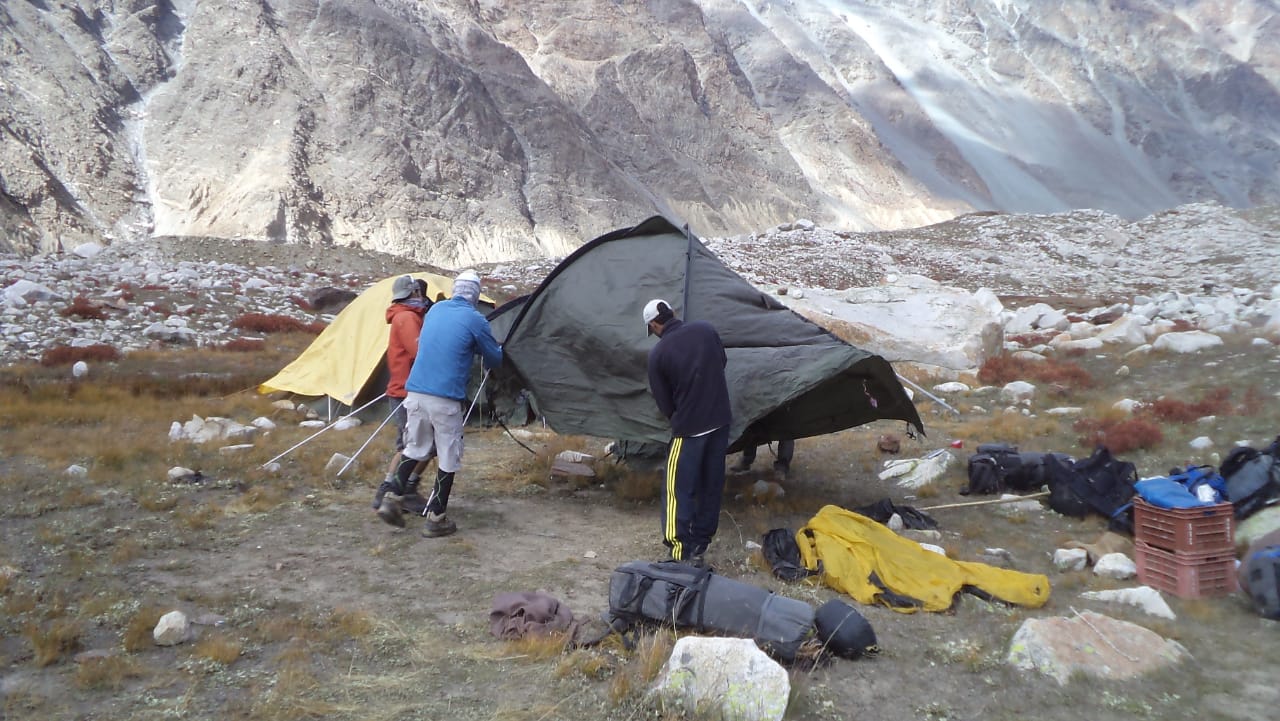
Mt. Bhagirathi Expedition 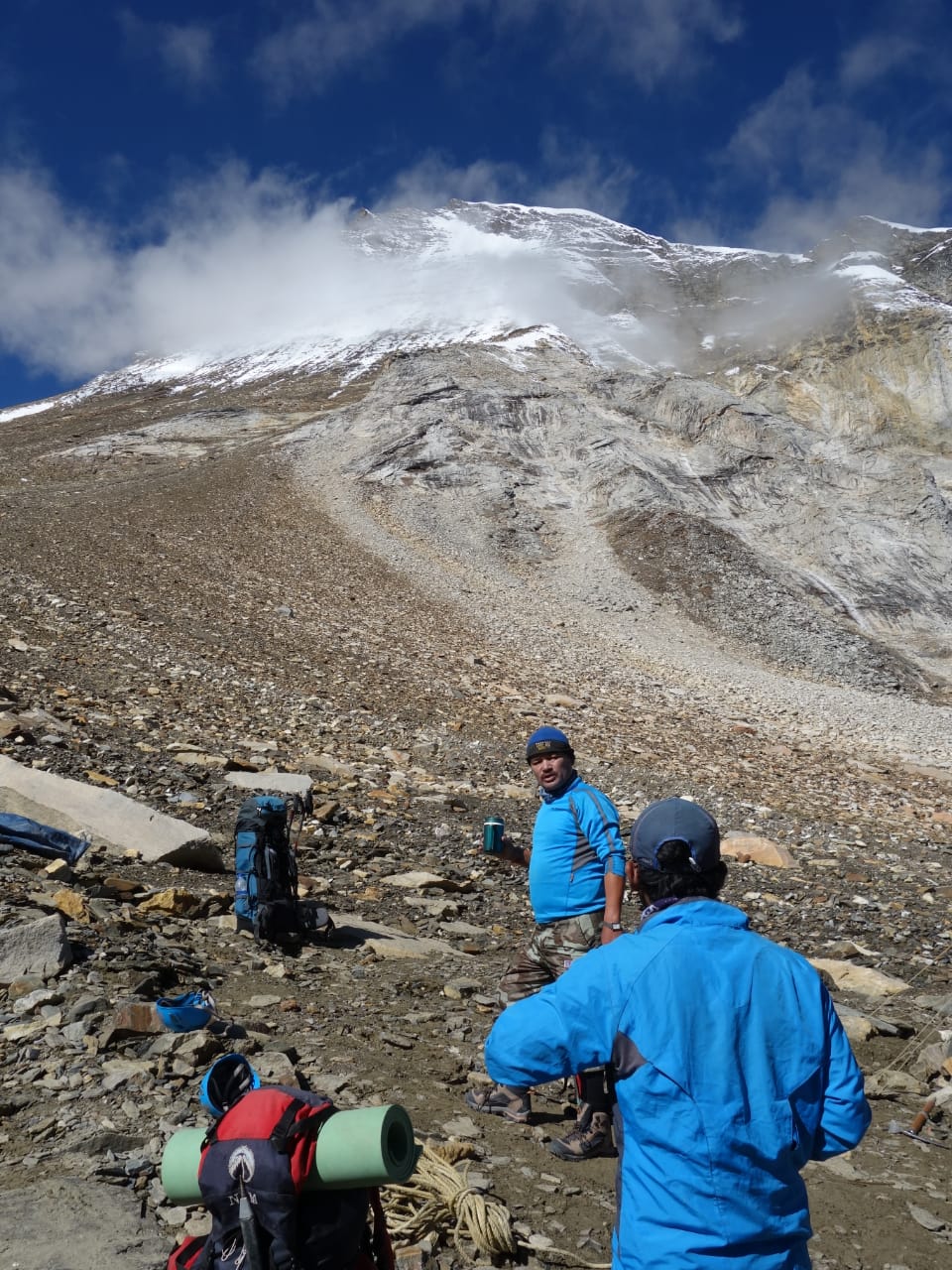
Mt. Bhagirathi Expedition 
Mt. Bhagirathi Expedition 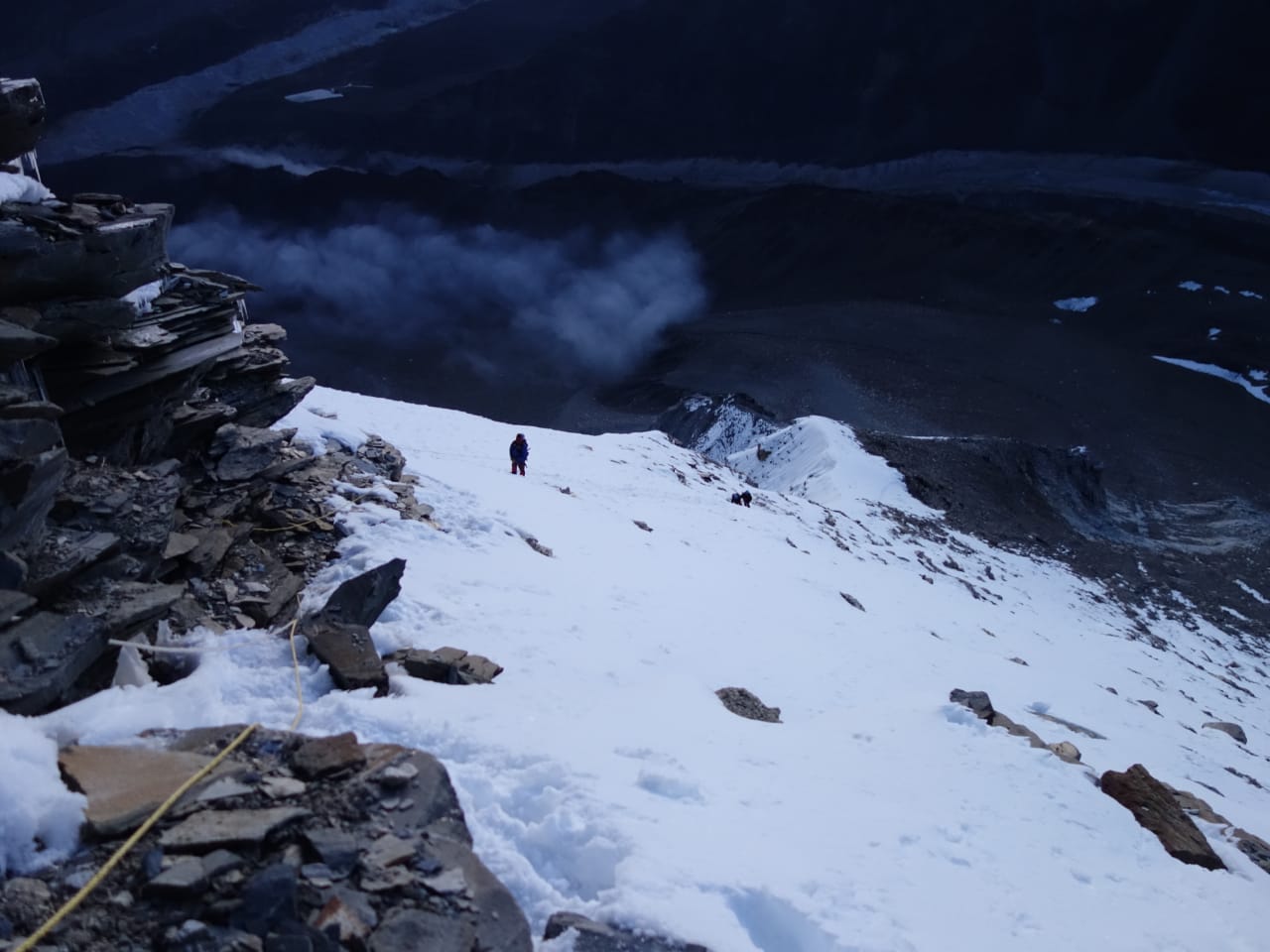
Mt. Bhagirathi Expedition 
Mt. Bhagirathi Expedition 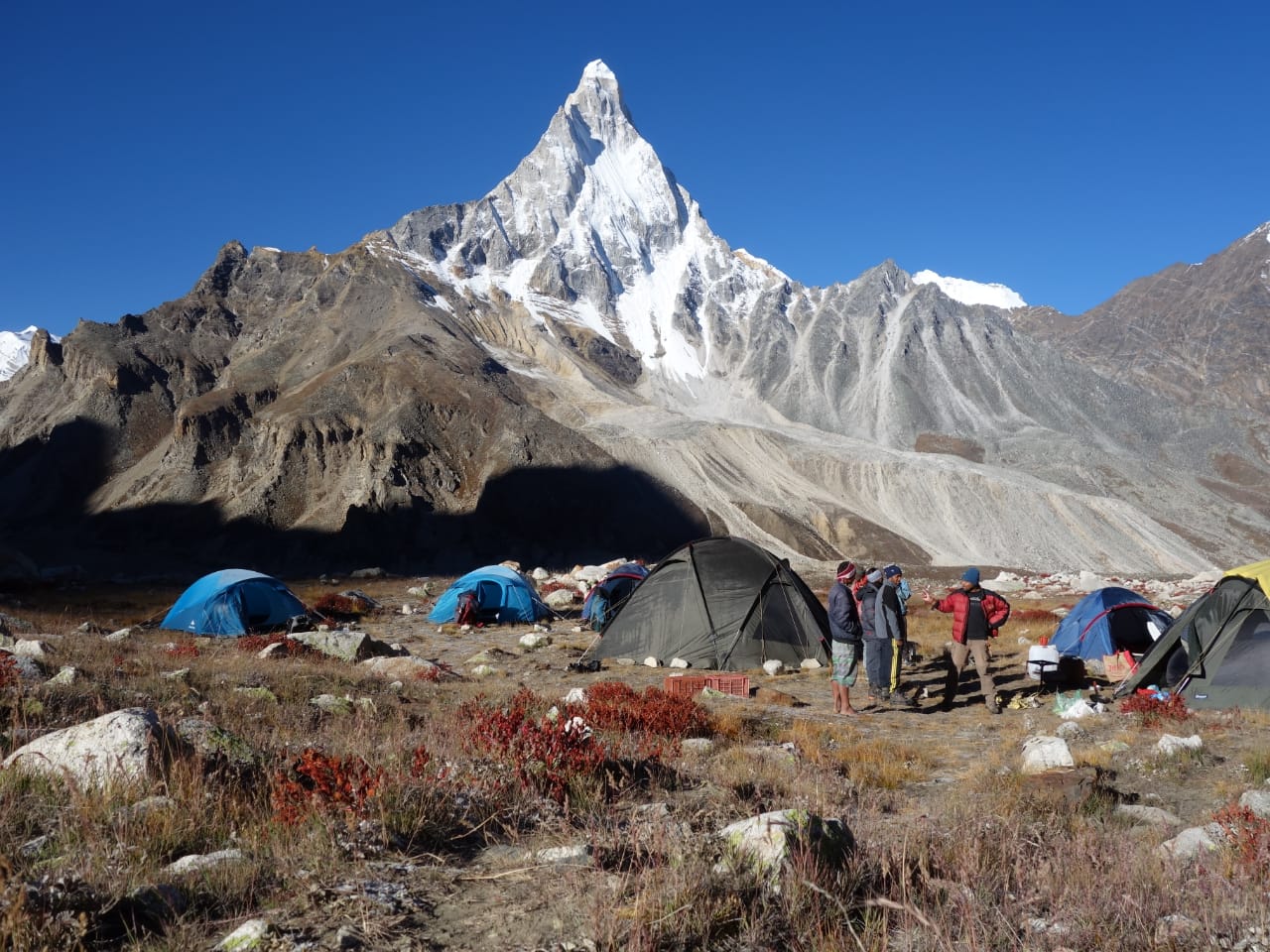
Mt. Bhagirathi Expedition 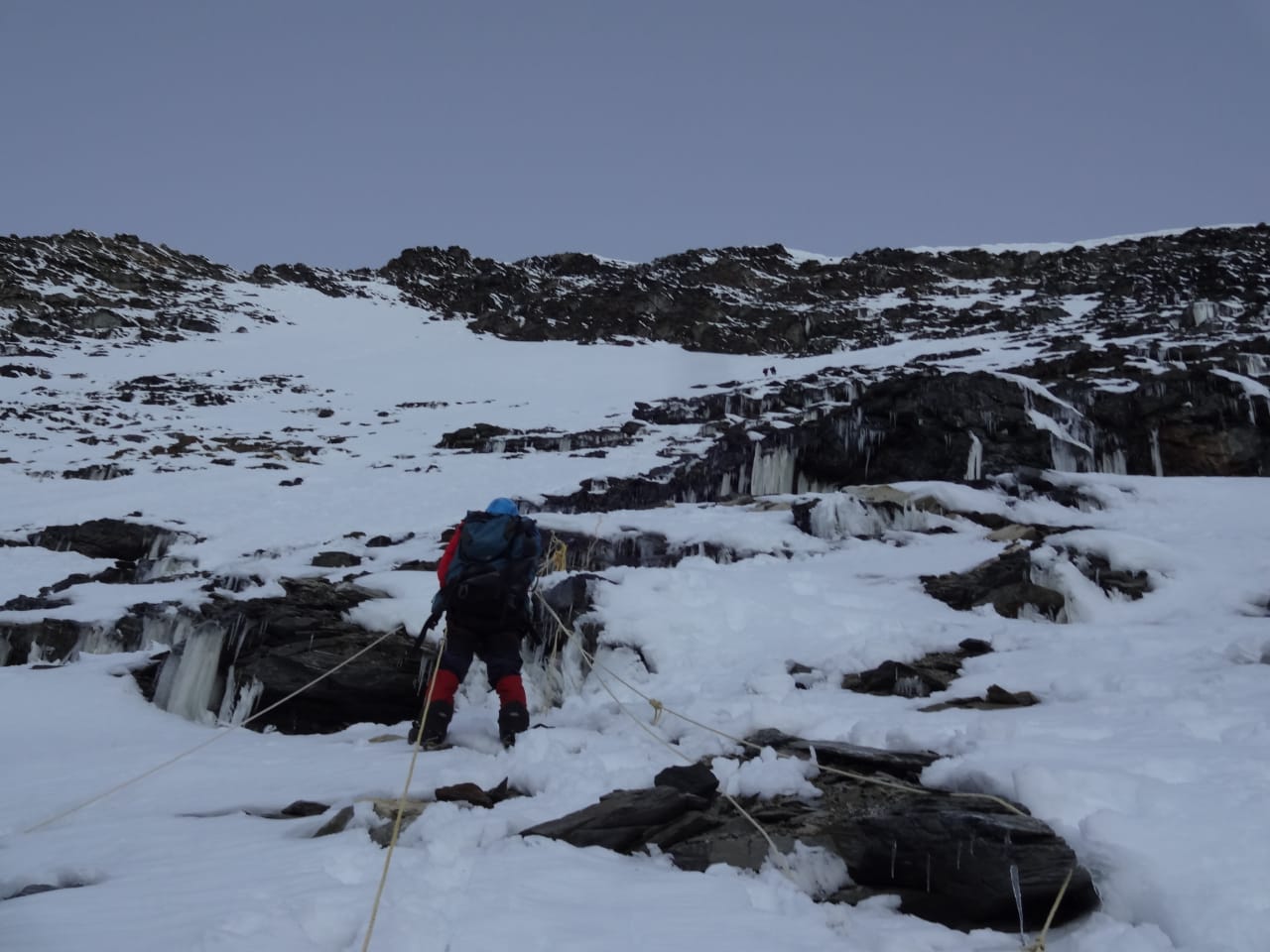
Mt. Bhagirathi Expedition 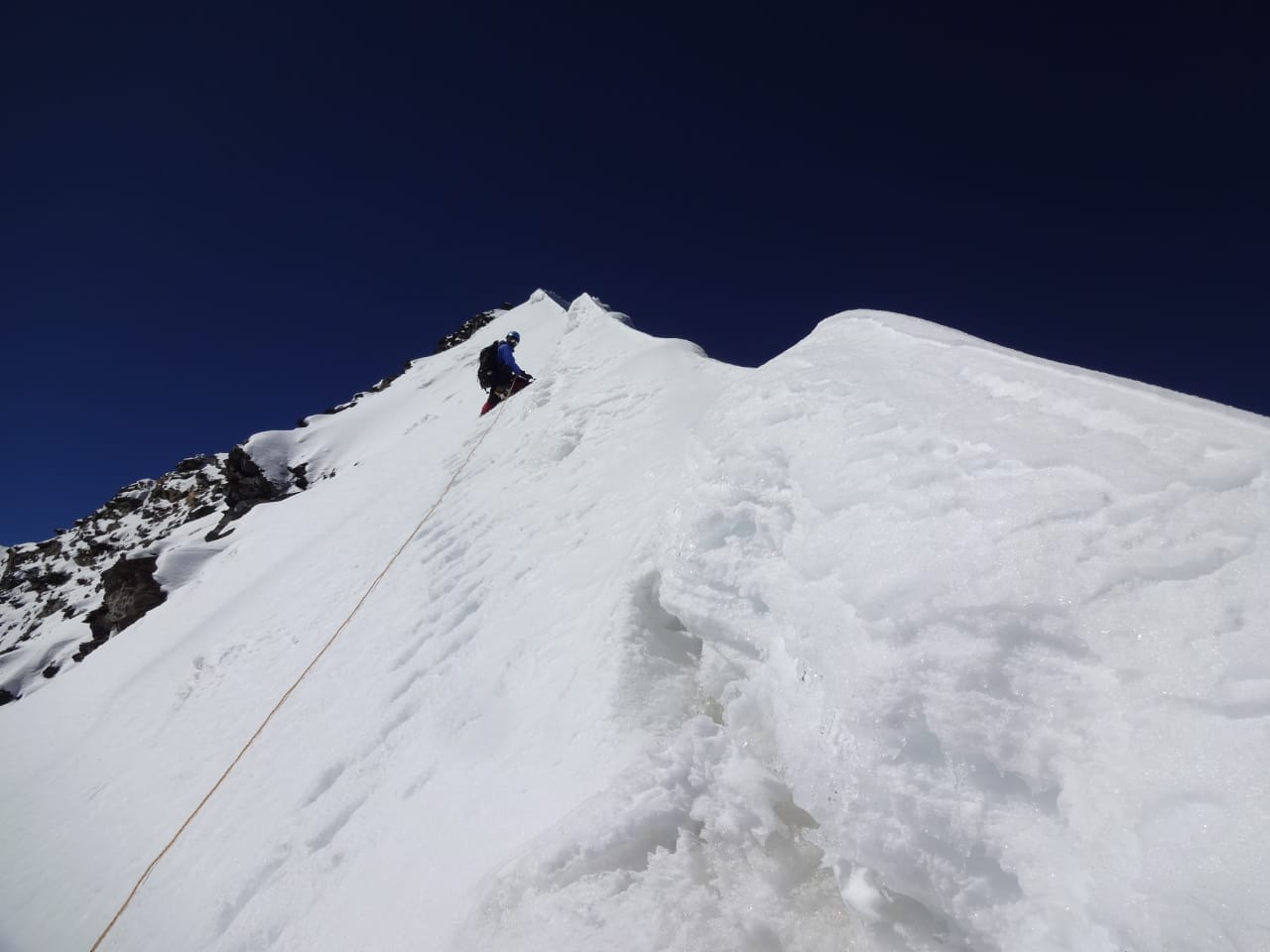
Mt. Bhagirathi Expedition 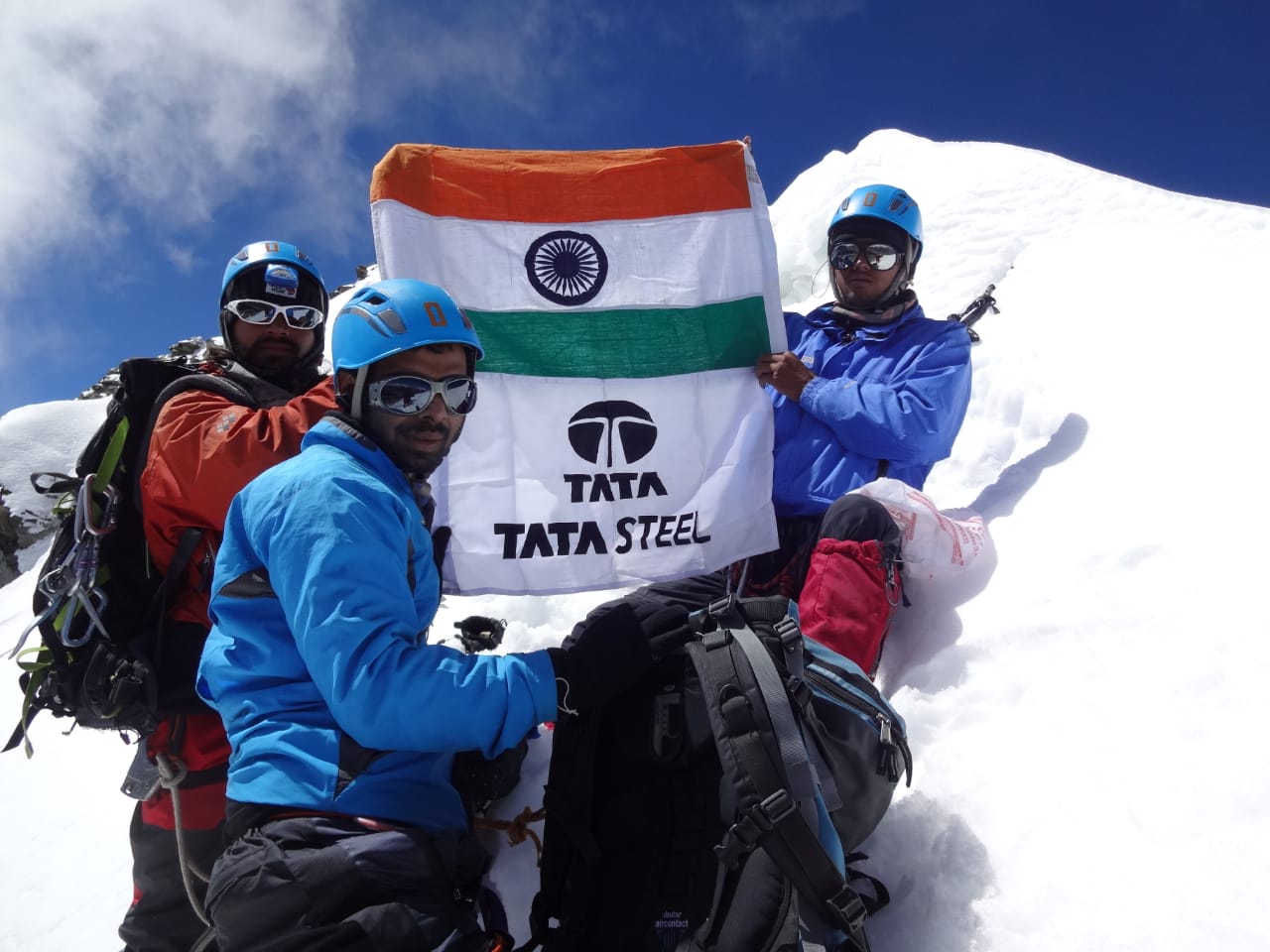
Mt. Bhagirathi Expedition 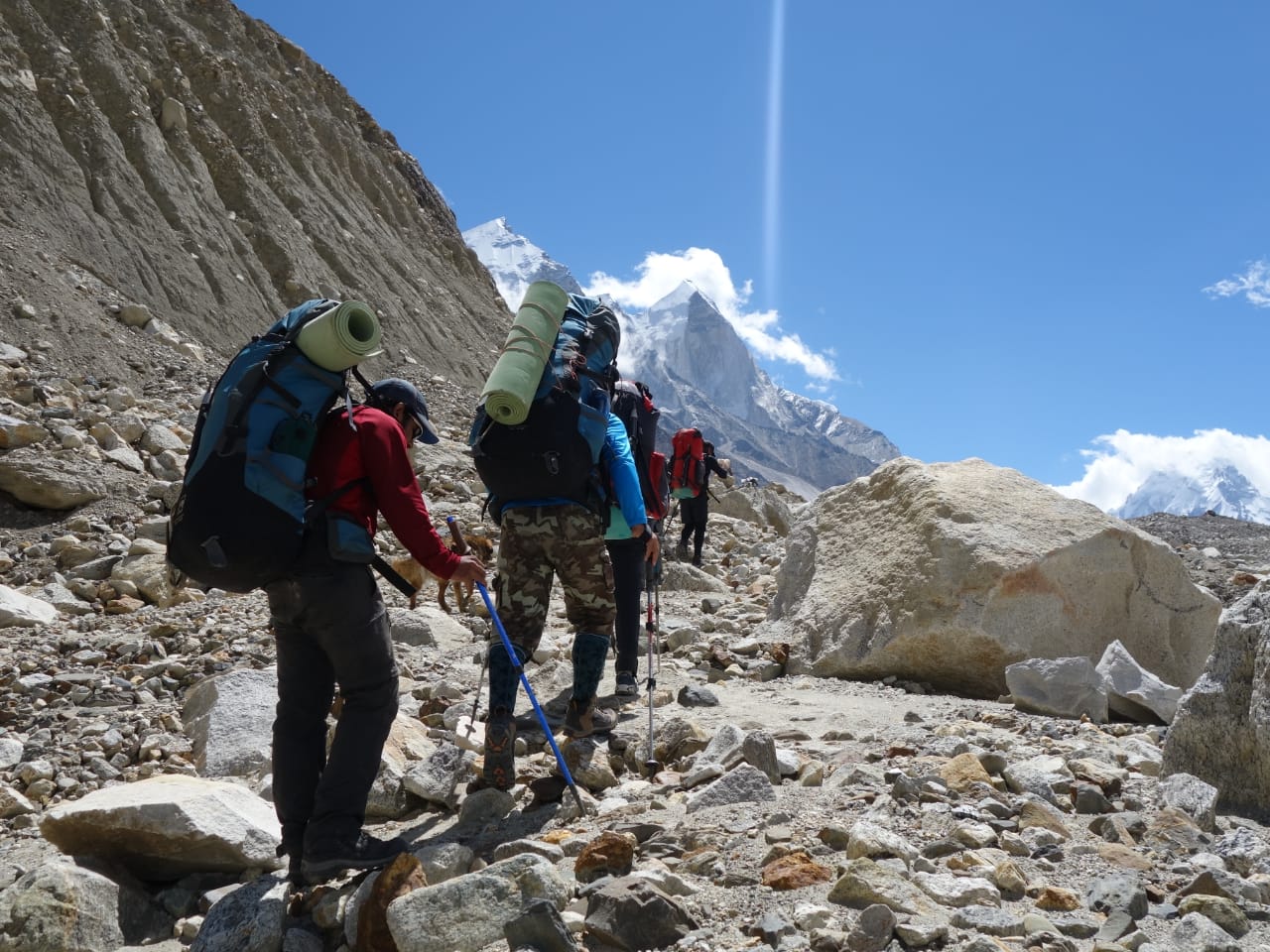
Mt. Bhagirathi Expedition
Prices and Dates
Price per person for at least 6 participants: 3900 €
Expedition also possible with fewer participants. Price on request.
Note: In Uttarakhand, some fees for the ascent have to be paid. Therefore, the total travel price is slightly more expensive than our Climbing trips in Himachal Pradesh.
Tour Info
Requirements
Mt. Bhagirathi 2 ist nur für erfahrene Trekker gedacht, die ihre Grenzen testen wollen. Die Herausforderungen auf der Expedition sollten nicht unterschätzt werden. Sie sollten diesen Trek nur versuchen, wenn Sie bereits Touren gemacht haben, die bis auf 4700-5000 Meter ansteigen. Es wird empfohlen, diese Expedition nicht zu wählen, wenn Sie sich in großen Höhen nicht akklimatisieren können. Außerdem müssen Sie eine starke körperliche Ausdauer haben, um diese Expedition zu bewältigen.
Information about our Expeditions in the Indian Himalaya with Chalo! Travels
- Mountain guide and team
On all our expeditions we have at least two trained local mountain guides with us. Our mountain guides have all completed all Indian mountaineering training and regularly lead expeditions and mountaineering courses. They have climbed the peaks several times and know the terrain excellently. All our mountain guides speak English.
In addition, there is a local team that will accompany us at least until the base camp. Which includes cook, helpers, horsemen with horses or Nepalese carriers, depending on the type of trek up to the base camp.
All our team members have been working with us for years, are very friendly, professional and always striving to give our guests a great experience and fulfill their wishes. Their English is rather mediocre or non-existent, but this is not necessarily a hindrance to communicating with them.
2. Summit
The summits have a different level of requirements from simple to difficult. Even with simple ascents of the summit, certain climbing techniques are required, as well as the use of equipment. On each of our tours we include days of practice to learn or repeat techniques and practice using crampons, ice picks, gaiters and using the rope. Thus, even inexperienced participants can participate in a summit expedition with a more difficult degree. The peaks are between 5000 and 6500 meters high.
The first days of the expeditions to the base camp are more like trekking days. The daily routes are between five and eight hours long (with breaks) and an average increase of around 500-800 metres of altitude is completed.
In between, rivers may have to be crossed. The paths are partly well developed, but sometimes also almost non-existent. On our trekking routes there are hardly any villages between, so we will take enough food for the whole tour.
From the base camp we will reduce our team and only travel with our guests and the mountain guides. While the rest of the team will stay in base camp. Meals will be easier, the daily routes can be up to 12 hours and especially on the day of the summit we start in the early morning hours around 2:00-3:00. From Base camp we will be on the road with all the equipment and depending on the situation, the mountaineering team will fix the ropes.
In all our expeditions we have planned 1-3 additional days in case the weather conditions are bad or we need more time for a good acclimatization. If we reach the summit without these additional days, our guests have a hotel in Manali at their disposal.
3. Daily routine till Base camp
7: 00 am Get up with tea
7:30-8:30 am Breakfast
7:00-9:30 am Dismantling of the camp
8:00- 9:30 am Start Trek
1:00 pm Lunch on the way
3:00-5:00 pm Arrival at the camp and camp construction
3:30-5:30 pm Snacks
7:00 pm Dinner
4. Altitude and altitude sickness
This is a very important topic that should not be underestimated, especially during our expeditions in the Indian Himalayas. At altitudes above 3500 m, our body has to slowly get used to the low air pressure, which also causes less oxygen to enter our lungs. The first signs of altitude sickness are headaches, which are accompanied by dizziness, nausea, insomnia and loss of appetite. It becomes problematic when water accumulates in the lungs and brain, and edema occurs. Then only the immediate descent to lower altitudes will help. To prepare for the heights on our treks, we will spend some nights in the same camp and do so-called “loadferrys”. This means that we transport some of our luggage to the next higher camp the day before and get back to the low camp. During the trek we will slowly ascend to acclimatize. If we notice that there are problems with our guests (each person is otherwise able to acclimatize, regardless of age, gender and fitness level), either the entire tour group or the participant with a team member descends/returns. In addition, it makes sense to take an emergency drug for altitude sickness. For this, it is best to inform yourself at the pharmacy or seek advice from the travel doctor. In addition, we will have oxygen with us for the emergency.
Our expeditions are organized in such a way that the complete tour from Delhi to Delhi is usually possible in two weeks. Nevertheless, we advise our guests to extend this period as far as possible in order to have more time for the actual acclimatization.
5. Luggage
On our expeditions from Basecamp, every expedition participant is responsible for carrying his or her personal clothes and belongings, as well as for his own equipment and some of the food and team equipment (ropes, materials, tents, cooking utensils). The total weight will be between 15 and 20 kg. Until base camp we will have the support of carriers and load horses. Here is the packing list for our expeditions.
6. Meals
During the trek to the base camp there will be a vegetarian full catering. Water is either boiled or we have a water filter with us.
Breakfast (daily selection):
Coffee/Tea
Oatmeal porridge/muesli/cornflakes/Indian porridge
Indian Breakfast/Toast/Eggs/Jam/Butter/Cheese/Honey/Chocolate Spread
Sliced fruit/vegetables
Lunch (mostly lunchbox), sometimes warm in the camp:
Sandwiches/Indian (rice, chapati, vegetables)/eggs/potatoes
Juices
Chocolate
Fruit
Snacks:
Tea/coffee
Cookies
French fries/Indian snacks
Soup
Dinner (depending on the length of the trek, a mix of Indian/Chinese/Continental):
Vegetable dish
Lentil dish
Rice/noodles
Chapati
Salad
Dessert
7. From Base camp, meals are more simple with carbohydrate-rich food
Breakfast:
Tea, Coffee
Oatmeal, muesli, rice
Lunch (self-carried and divided for all days):
Dried fruits and nuts
Chocolate bar/muesli bar
Boiled potatoes/eggs
Cheese
Fruit
Snacks:
Biscuits, Soup, Instant Noodles, Tea/Coffee
Dinner:
Noodles/rice/instant dishes/couscous
8. Accommodation and Camp
We have light 2-3 man tents, sleeping bags with comfort zone up to -5°C, as well as good mats. It is recommended to bring personal indoor sleeping bags.
In addition, we have a spacious dining tent with tables and chairs, and a kitchen tent for the team up to base camp. For expeditions of up to 4 people, the kitchen tent can also act as a dining tent at the same time.
From Base camp we will not have a kitchen and dining tent.
9. Temperatures
In the Himalayas, temperatures fluctuate widely. While it can get warm up to 25°C during the day and the sun is not only warming but also very intense (sun protection is a must), it can also cool down at night well below the minus degrees with temperatures down to -10° C, especially in the months end of September and October, as well as in June and at altitudes from 4500 meters. There may also be weather changes with snow and storms. Bad weather can always be a hindrance for a successful climb.





